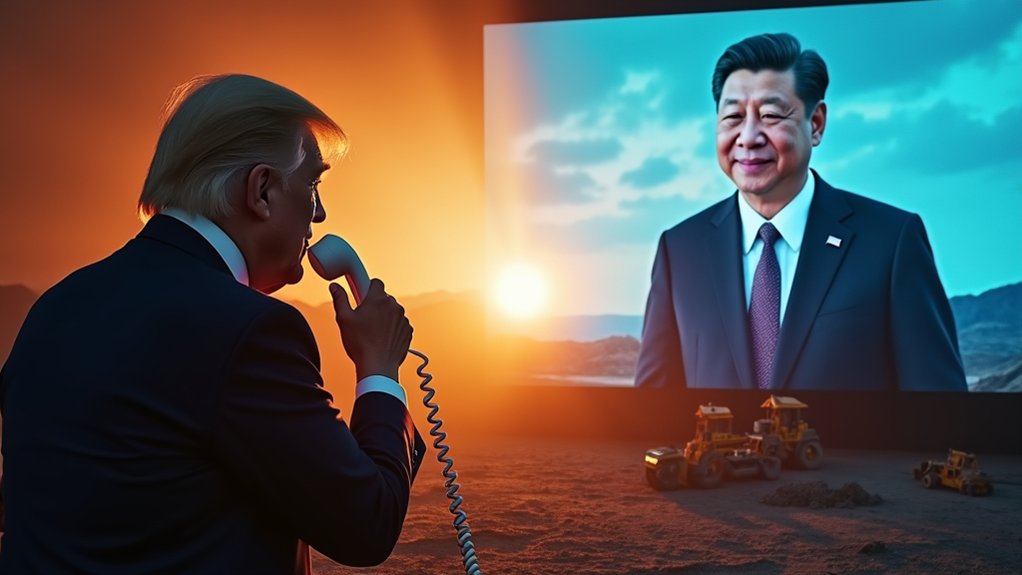A tense phone call between Trump and Xi failed to resolve the escalating rare earth materials crisis, with both leaders spinning vague claims of progress. The collapsed May Geneva deal triggered fresh tariffs – Trump slapped China with 55%, while Beijing responded with a mere 10% bump. U.S. manufacturers are sweating bullets over supply chain stability, especially with critical summer deadlines approaching. The deeper story reveals America’s Achilles heel in rare earth dependency.

While President Trump and Chinese President Xi Jinping struggled to salvage a collapsed rare earth materials deal during their latest call, the outcome remained frustratingly vague. Both leaders claimed progress and agreed to restart trade talks in London, but the devil’s in the details – or rather, the lack of them.
The stakes couldn’t be higher. China‘s iron grip on rare earth materials has U.S. manufacturers sweating bullets. These critical elements, found in everything from smartphones to missile guidance systems, have become pawns in an increasingly tense trade war. And China knows exactly what cards it’s holding.
The May Geneva deal was supposed to fix this mess. It didn’t. Instead, it spectacularly imploded, triggering a fresh round of tit-for-tat tariffs. Trump slapped China with a whopping 55% tariff. Beijing yawned and responded with a modest 10% increase of their own. Classic.
Things got personal when visa restrictions entered the mix. Chinese students, once welcomed at U.S. universities, found themselves caught in the crossfire. Because nothing says “diplomatic crisis” quite like threatening to send college kids packing. A new tariff of 20% was specifically targeted at China over fentanyl exports.
Educational diplomacy takes a nosedive as Chinese students become unwitting pawns in the escalating trade tensions between superpowers.
The framework agreement emerging from the Trump-Xi call is about as solid as a chocolate teapot. Sure, both sides are making nice noises about implementation, but we’ve seen this movie before. U.S. industries depending on rare earth supplies are still holding their breath – and not in a good way.
Meanwhile, American manufacturers are stuck in limbo. Their supply chains hang by a thread, dependent on Chinese rare earth exports that could vanish faster than free samples at a Costco. The situation has exposed a glaring weakness in U.S. strategic planning.
The whole mess highlights America’s desperate need to develop alternative rare earth sources. But that’s easier said than done. For now, the U.S. remains uncomfortably dependent on Chinese goodwill – a commodity that seems about as rare as the elements themselves.





